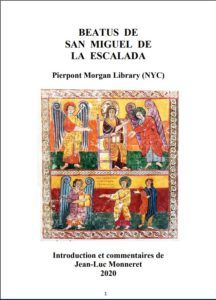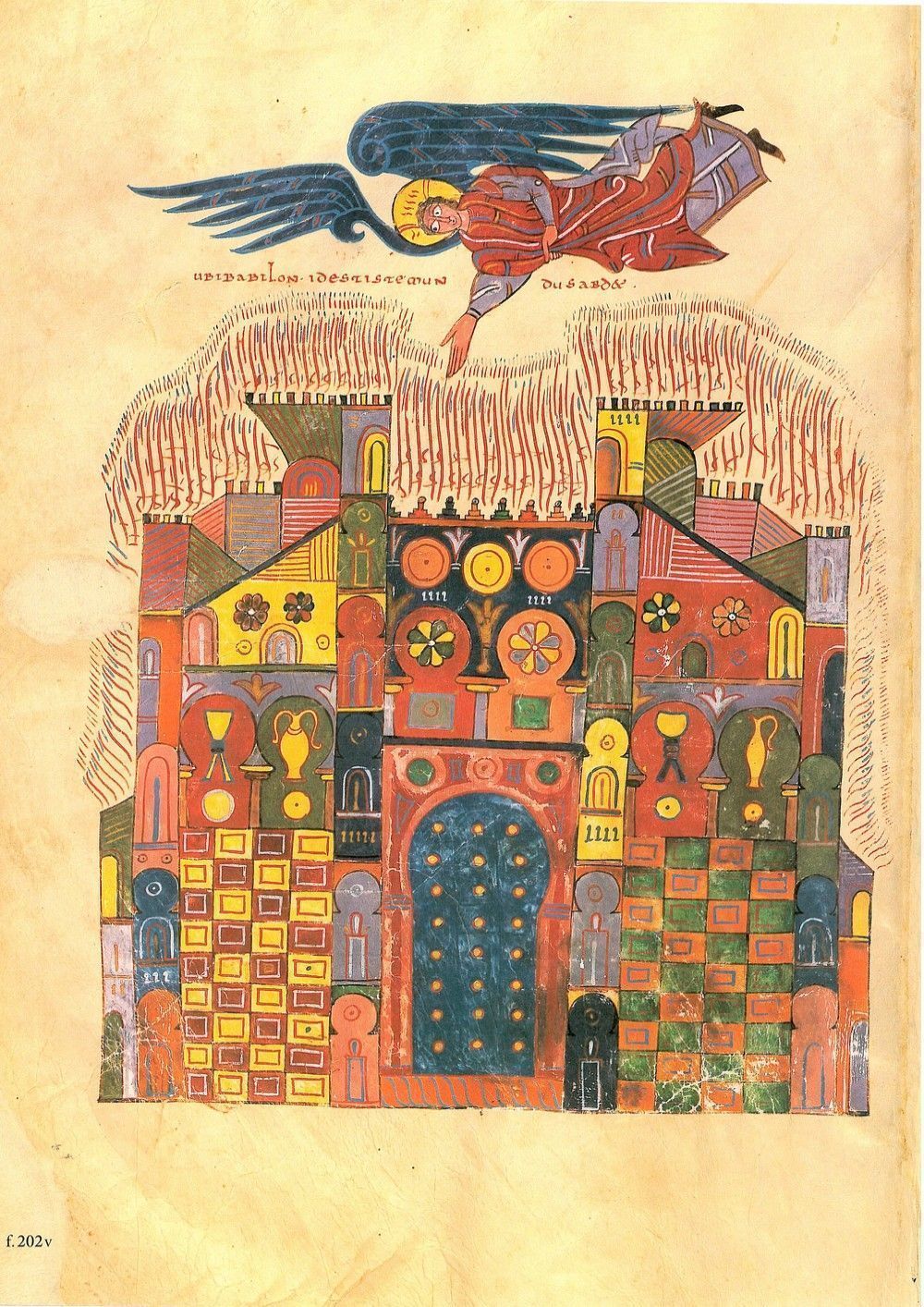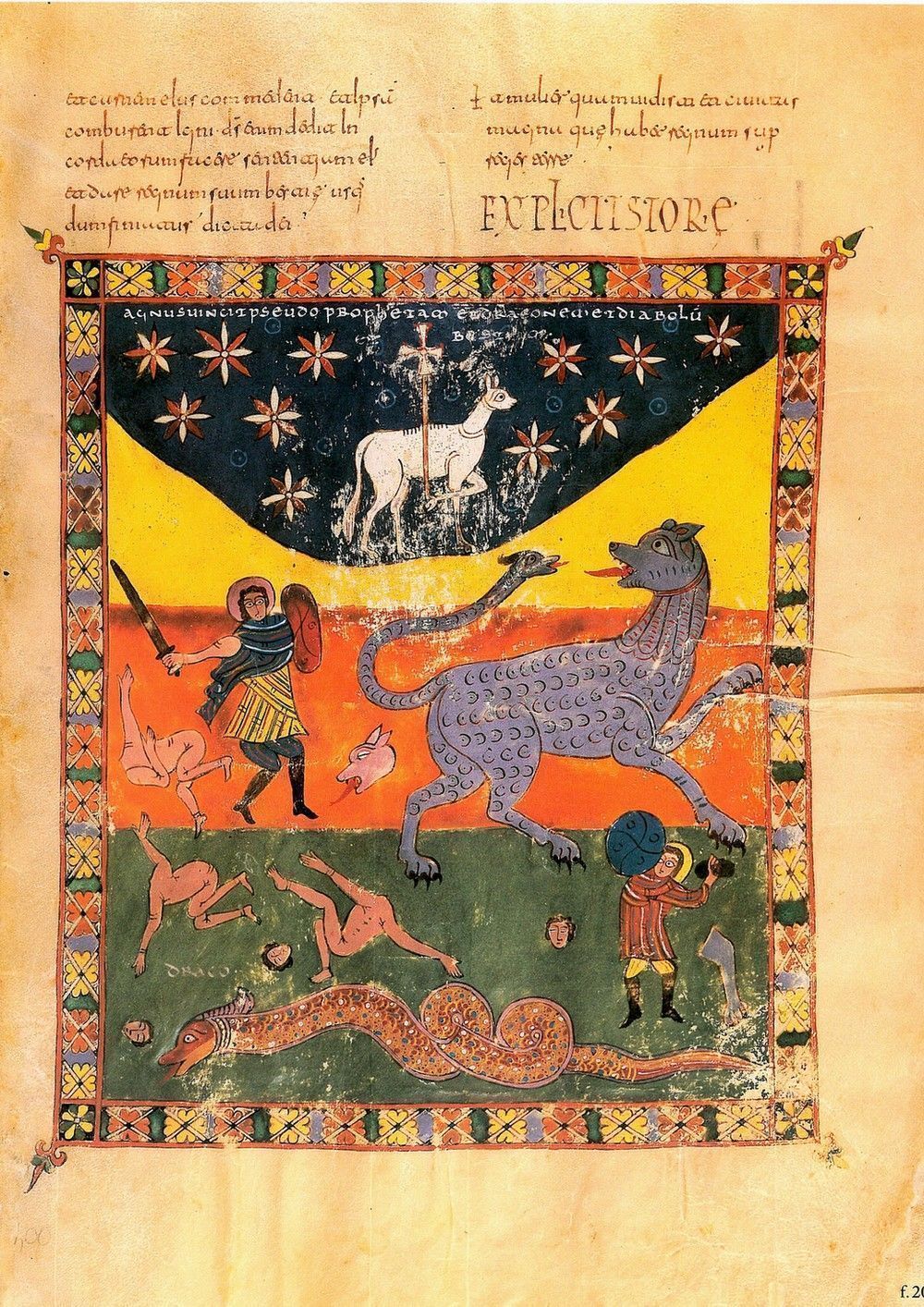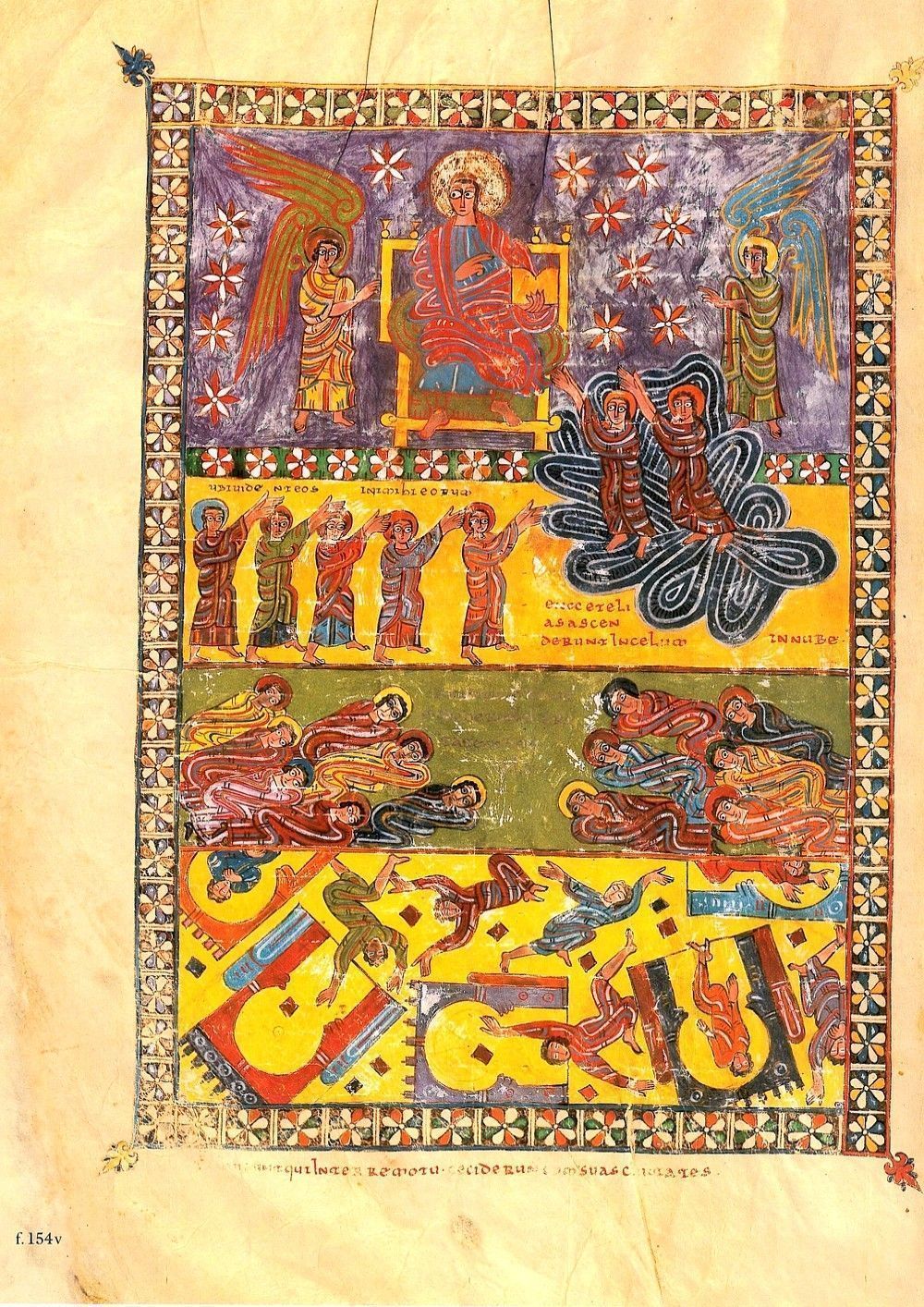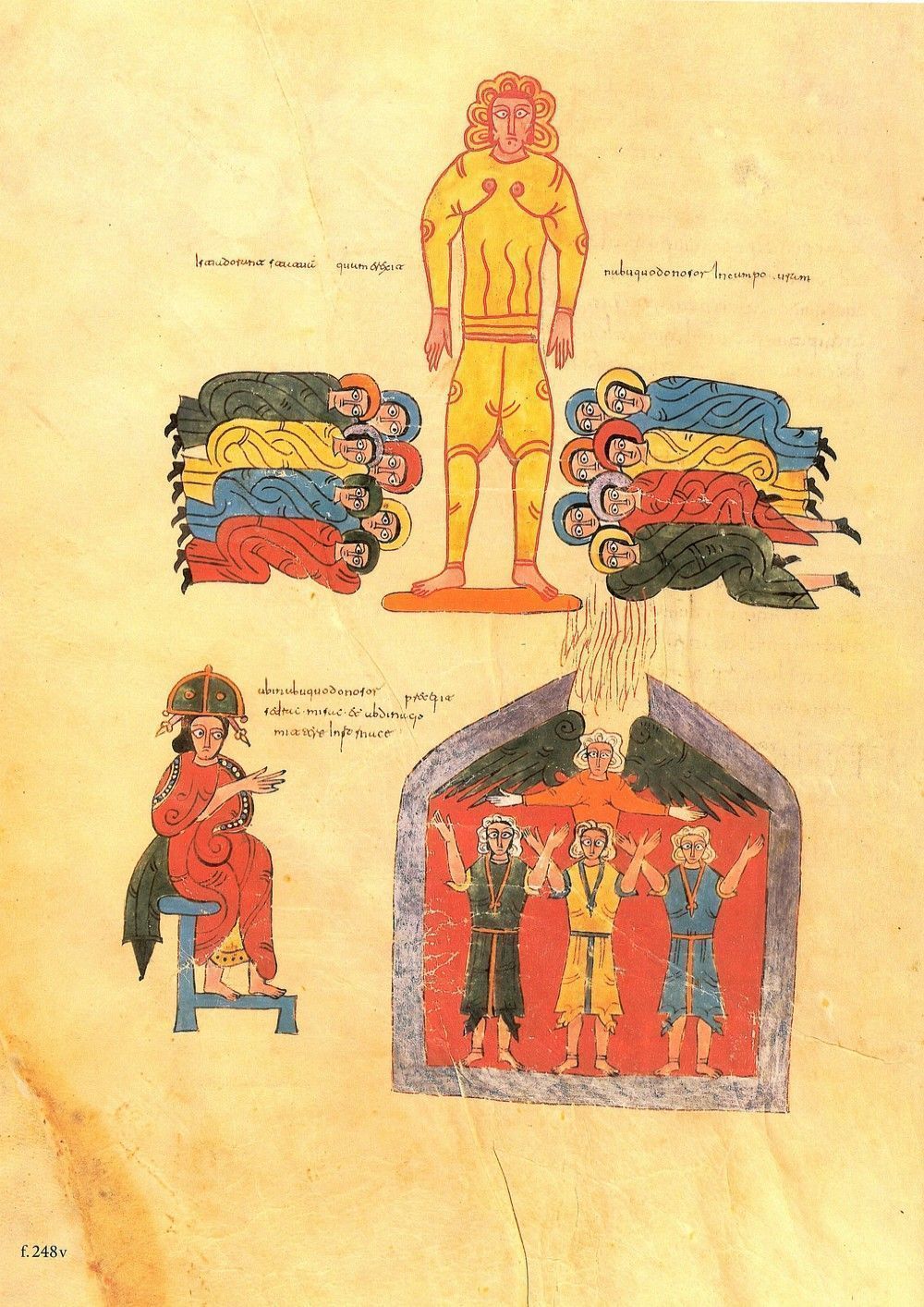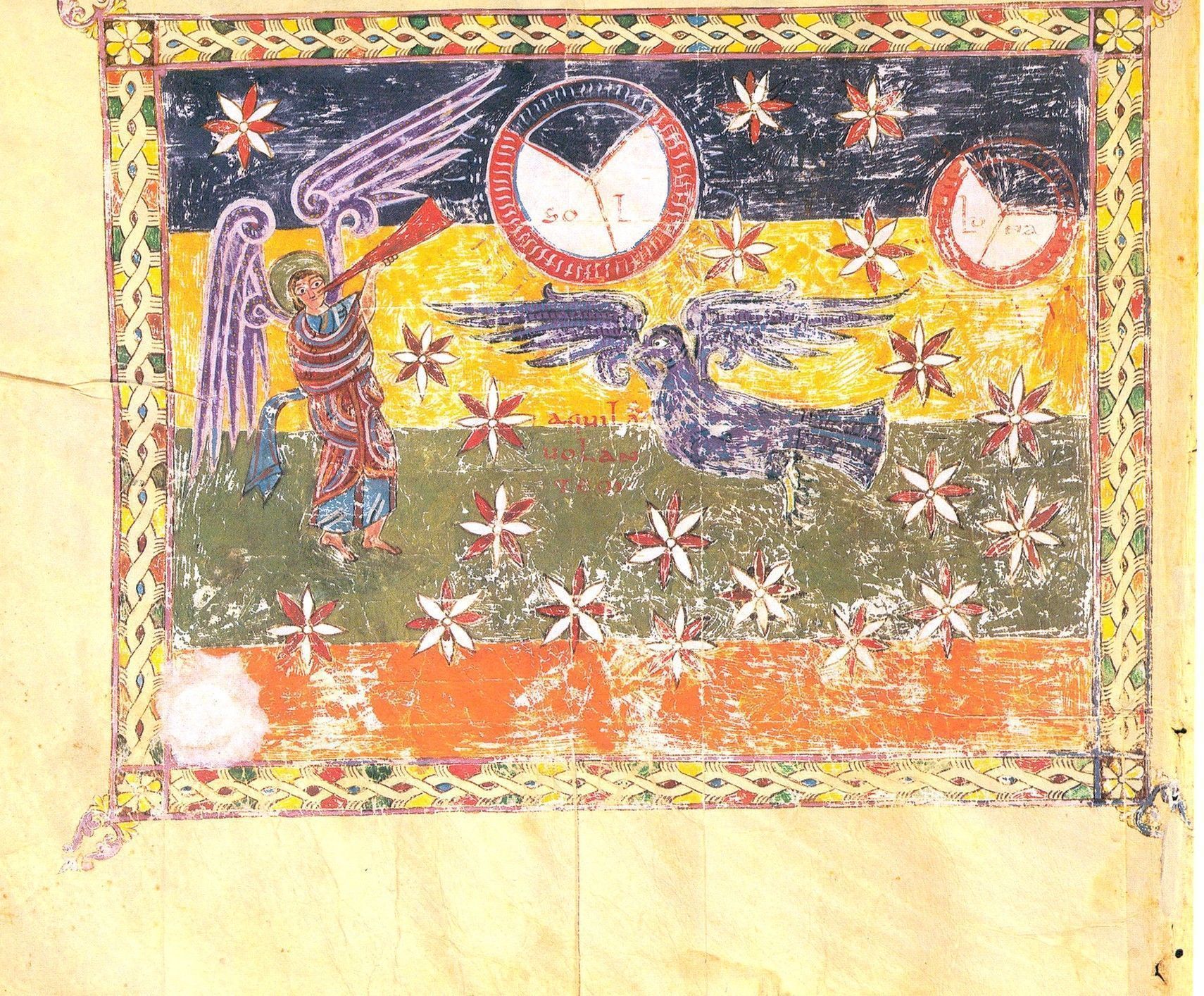BEATUS DE SAN MIGUEL DE ESCALADA
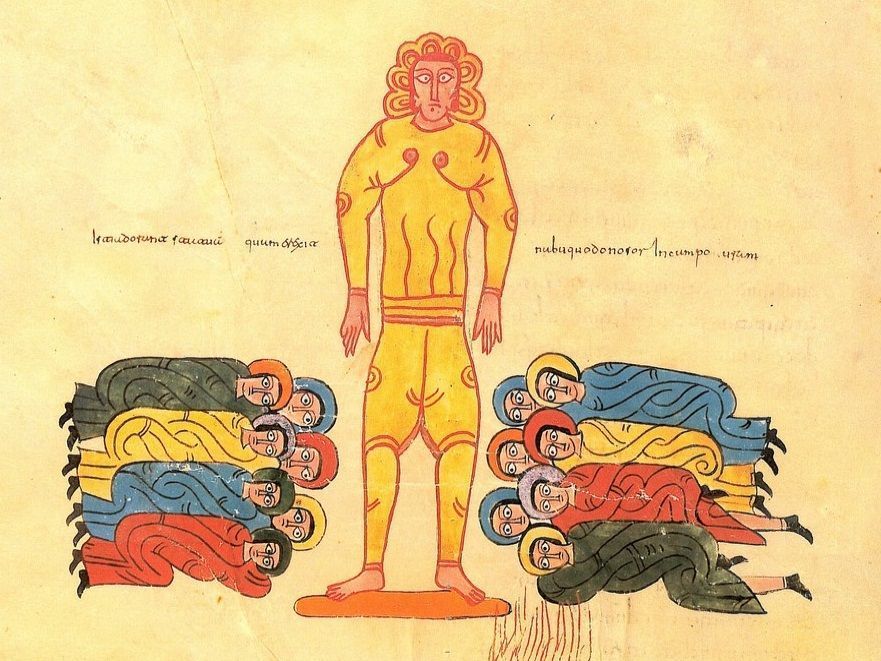
Notas Previas
* Reference: Pierpont Morgan Library, New York (MS.644, two volumes).
* Other Names: Beatus Magio, Beatus Morgan, Beatus Thompsonian.
* Dimensions: 400x300mm.
* Approximately 300 pages each, in parchment, Visigothic letter type.
* 89 miniatures.
* Facsimile available: Editorial Casariego.
Study of the Blessed of San Miguel de Escalada by our collaborator Jean-Luc Monneret in which all the images of the manuscript have been digitally cleaned. Click the image to access.
Entorno histórico
We know it was produced by the archipictor Magius, commissioned by the abbot of the Leonese monastery of San Miguel de la Escalada.The author’s name appears twice, once, in a long coda and then at the end of the text. Its datation  is questioned as most authors place it in 922, but Camón Aznar suggests 958 and, according to John Williams, who in the last years has made a thorough study, it was written in 945. There is also a controversy about its scriptorium of origin. Initially it was believed that its origin was San Miguel de Escalada but it is more likely that it is Salvador de Tábara, as that was the place where Magius worked and was burried in 968.
is questioned as most authors place it in 922, but Camón Aznar suggests 958 and, according to John Williams, who in the last years has made a thorough study, it was written in 945. There is also a controversy about its scriptorium of origin. Initially it was believed that its origin was San Miguel de Escalada but it is more likely that it is Salvador de Tábara, as that was the place where Magius worked and was burried in 968.
This Beatus stayed in San Miguel de Escalada at least until the 14th century, in hands of the Archbishop of Valencia, Martín Pérez de Ayala who, upon his death in 1566, donated the manuscript to the military order of Santiago in its master’s residence of Uclés. It remained there until 1837, when the properties of the Church were confiscated in Spain. Around 1840, a merchant by the name of Roberto Frasineli, handed it over to the manuscript collector Guillermo Libri Carucci, in exchange of an ancient silver clock, who by then had slipped through the Pentateuch of Tours in France and before, in 1852 he sold it to the Count of Ashburnham. In May 1897 it was acquired by the collecor Henry Yates Thompson from London and on June 3rd 1919 it was acquired in the lot 21 by the intermediary Quartich, for the Pierpont Morgan Library in New York.
Descripción
With this manuscript Magius begins the Beatus’ second pictorial style that, with Tábara’s, created by Munnio in an unknown monastery, are the two most meaningful pieces 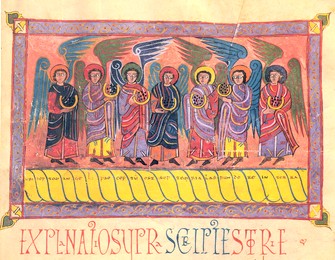 of art of this series, that also includes a codex of great interest like the Beatos de Valcavado, from the Gerona Cathedral and Seo de Urgell. Besides, the Beatus of Tábara includes at the end two pages that let us know that there was another beatus started also by Magius, although he died in 968 without having it finished for what it was concluded two years later by Emeterio and the nun Ende.
of art of this series, that also includes a codex of great interest like the Beatos de Valcavado, from the Gerona Cathedral and Seo de Urgell. Besides, the Beatus of Tábara includes at the end two pages that let us know that there was another beatus started also by Magius, although he died in 968 without having it finished for what it was concluded two years later by Emeterio and the nun Ende.
In this series completely changes not only the utilization of colours and space that up to then were usual in beatus, but also the kind of colorings used, that cease to be water based paints, and start to be used over an often wax varnished background; colours bound with new elements, like egg, honey or glue, that transform the natural colours generating large smooth coats of paint and improving significantly the quality of the whole, offering at the same time a great chromatic harmony based on subtle colours and a strong chromatic refinement through the juxtaposition of vivid hues in contrast. Besides, there are the double page miniatures, very rarely seen in the previous illustrated version.
But, besides all this technique it is applied in a new pictorial space, arranged in stripes of irregular width, with figures without any perspective nor third dimension, due to the little interest to reflect reality, generating a spiritual environment as in a sort of religious surrealism, fully adequate for the message the beatus intends to convey in its Commentary on the Apocalypsis.
The result shows the maturity attained in the middle of the 10th century with the Hispanic miniature, that can only be a consequence  of an over three hundred years old tradition -at least from the scriptorium of Seville in times of Isidoro- along which, different influences became incorporated, within an eclectic spirit, according to the likings of each artist. Because of this ease of integration of any artistic current inherited from the Visigothic times, the different authors that have studied it have been able to find in this beatus remiscences that go from Early Christian ones to Visigothic, Coptic, Northafrican and even Nordic, Irish, Carolingian and a lot of Islamic reflections, besides, of course its relation with the former Mozarabic miniature.
of an over three hundred years old tradition -at least from the scriptorium of Seville in times of Isidoro- along which, different influences became incorporated, within an eclectic spirit, according to the likings of each artist. Because of this ease of integration of any artistic current inherited from the Visigothic times, the different authors that have studied it have been able to find in this beatus remiscences that go from Early Christian ones to Visigothic, Coptic, Northafrican and even Nordic, Irish, Carolingian and a lot of Islamic reflections, besides, of course its relation with the former Mozarabic miniature.
Regarding its content, Magius has been attributed a series of new images “to announce the tremendous trial that the world awaits for the glory of the Father, the Son and the Holy Ghost”, as he himself explains in this work’s coda. These images that became part of beatus later than San Miguel de Escalada, include, among others, the portraits of the evangelists and the genealogical tables that are not contained in the manuscripts of branch I and also adds the Illustrated Commentary on the Book of Daniel.
Conclusiones
Both for its quality and the excellent state of preservation but specially for the stylistic changes and the content it provides, and for the explanation that Magius offers about them and the influences they brought into later manuscripts, the beatus of San Miguel de Escalada is a fundamental codex to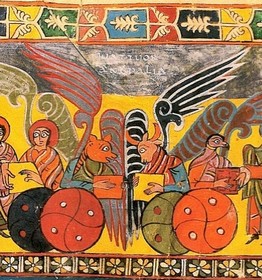 know the history and charateristics of high medieval Hispanic miniature, as it lets reach a series of conclusions we think of great interest.
know the history and charateristics of high medieval Hispanic miniature, as it lets reach a series of conclusions we think of great interest.
-
It seems reasonable to discard the possibility that a work of the quality and maturity of the Beatus of Escalada had been made in 922, since Magius must have been too young by then as he died in 968 and we suppose at a not very longevous age, as he was still working in a codex of the importance of Beatus of Tábara.
-
Although at a time it was thought that this manuscript was the origin of all illustrated versions of the Commentary on the Apocalypsis of Beatus of Liébana, the discovery of a page of Beatus of Cirueña in Silos shows the existence of several much older illustrated versions. Besides, if we accept its datation later than 940, it comes out that the Beatus Emilianense of the National Library in Madrid is older, with a more primitive technique.
-
Magius informs that he has added new images, which indicates that he started with a beatus that was earlier to the second word-for-word version that we do not know, and that it already included minatures. On the other hand, the miniatures of this codex contain legends that do not correspond with the texts of the Commentary, but to previous manuscripts, not any longer in use in the 10th century, but that we know were used by the Beatus to write his own. It lets reconsider the possibility that that the original commentaries of the Beatus of Liébana were already illuminated and that, at least that second word-to-word version, was used by Magius keeping in the images the same legends of the original.
- Although it is certain it was written for San Miguel de Escalada, as it is dedicated to St. Michael and also because some marginal note says so, it is not likely it was accomplished in that monastery as there is no information it had a scriptoium, whereas Tabara’s, where we know Magius usually worked, had all the elements, to the extreme that in the famous miniature of its tower -that we have turned it in our anagram- the monks can be seen working at their scriptorium.
Bibliografía
Historia de España de Menéndez Pidal: Tomos VI y VII*
SUMMA ARTIS: Tomos
VIII y XXII
L’Art Préroman Hispanique: ZODIAQUE
Arte y Arquitectura
española 500/1250: Joaquín Yarza
El Beato de San Miguel de Escalada: John
Willians; Vicente García Lobo (Editorial Casariego, S.A.)
Portales
Medievalum. El Beato de Maius y la Morgan Library de Nueva York
arteHistoria. El más antiguo fragmento ilustrado de Beato y los
Beatos del siglo X




